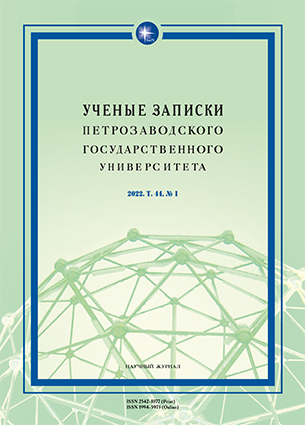ИНФОРМАЦИОННЫЕ ВОЛНЫ И ИХ ТЕКСТОВАЯ РЕАЛИЗАЦИЯ
В МЕДИАДИСКУРСЕ: ЛИНГВОДИДАКТИЧЕСКИЙ АСПЕКТ
INFORMATION WAVES AND THEIR TEXTUAL IMPLEMENTATION IN MEDIA DISCOURSE:
LINGUISTIC AND DIDACTIC ASPECTS
Author(s): Tatiana Igorevna PopovaSubject(s): Language and Literature Studies
Published by: Петрозаводский государственный университет
Keywords: hypermedia text; information waves; standard text; levels of proficiency in Russian as a foreign language
Summary/Abstract: The article deals with the topical issue of organizing an open communicative media space on the principleof an information fi eld, the dynamics of which are set by information waves. The author of the article focuses on theproblem of selecting standard texts when teaching Russian as a foreign language. This selection can be carried out withthe base of the theory of information waves. The novelty of the study is due to the fact that for the fi rst time the ideaof the hypermedia text is associated with the level approach in teaching Russian as a foreign language. The article isaimed at correlating the concept of the hypermedia text with the formation of discursive competence at diff erent levelsof profi ciency in Russian as a foreign language. The tasks of the article are to describe typical media texts of diff erentinformation waves and correlate them with the requirements for the formation of the discursive competence in Russianas a foreign language. The study is based on the methods of functional-stylistic description of functional-semantic typesof speech. The result of the study showed that media texts representing an information occasion are narrative texts writtenin the fi rst person with a typical information structure characteristic of the narrative text, which makes it possibleto use them when teaching Russian as a foreign language at the B1 level. The fi rst information wave is implementedin the form of texts that render the information occasion as third-person narrative texts and interview texts, which fi tsthe requirements for the level of discursive competence at the B1 and B2 levels. The second information wave is representedby evaluative comments; these texts can be used at the B2 level. The third information wave includes essaysand comments of an inducing nature, which corresponds to the C1 level. Depending on how the evaluative or inducingintention is expressed – explicitly or implicitly – the media texts of the second and third waves can be used to form discursivecompetence of language profi ciency at the B2 or C1 levels. The analysis showed a high linguistic and didacticpotential of the concept of the hypermedia text in teaching Russian as a foreign language.
Journal: Ученые записки Петрозаводского государственного университета
- Issue Year: 44/2022
- Issue No: 1
- Page Range: 50-55
- Page Count: 6
- Language: Russian

